Step by step guide
Evolution 5 year service - P60, P70 and P80
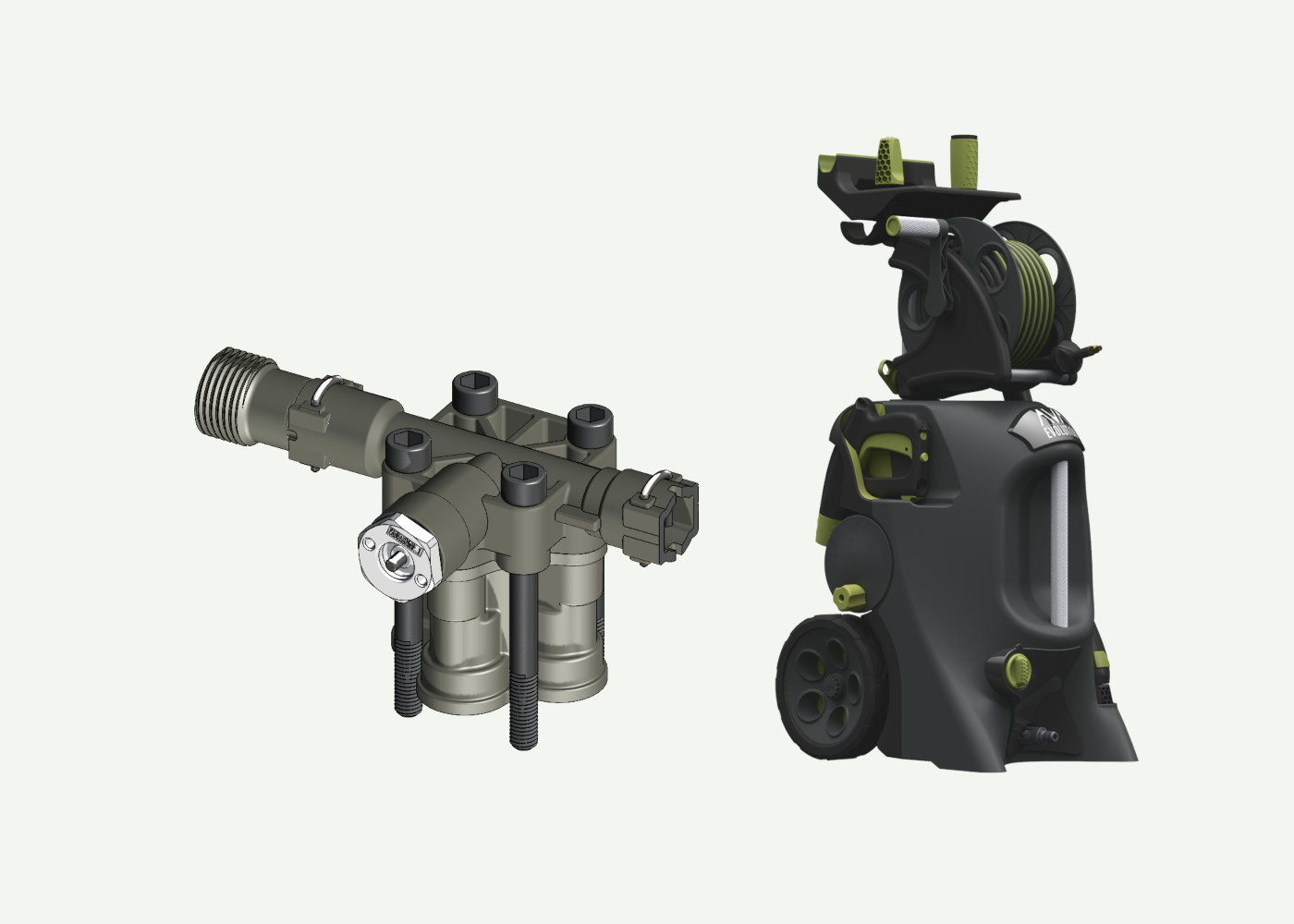
Servicing our pressure washers are quite straight forward and could be done by most people by following the step-by-step instructions in this manual.
Please go trough the whole manual before starting work on your pressure washer to make sure you understand the procedure and that you have the necessary tools to complete the task.
Always unplug the pressure washer from both the mains power and the water outlet before starting the service.
Even though power and water is disconnected there may be pressurized water in the hose. Discharge this pressure by pulling the trigger on the gun.
Make sure your work area is clean and appropriate for the work you are about to do. There will usually be a small amount of water inside the pump and hose.
If you are doing a 10-year service, then be prepared to collect the used oil from the oil chamber. Please dispose of the oil in accordance with local law and regulations.
ISO 46 hydraulic oil can be substituted with similar non detergent oil of the same viscosity.
00. Parts and tools
An overview of what is needed to do this service.
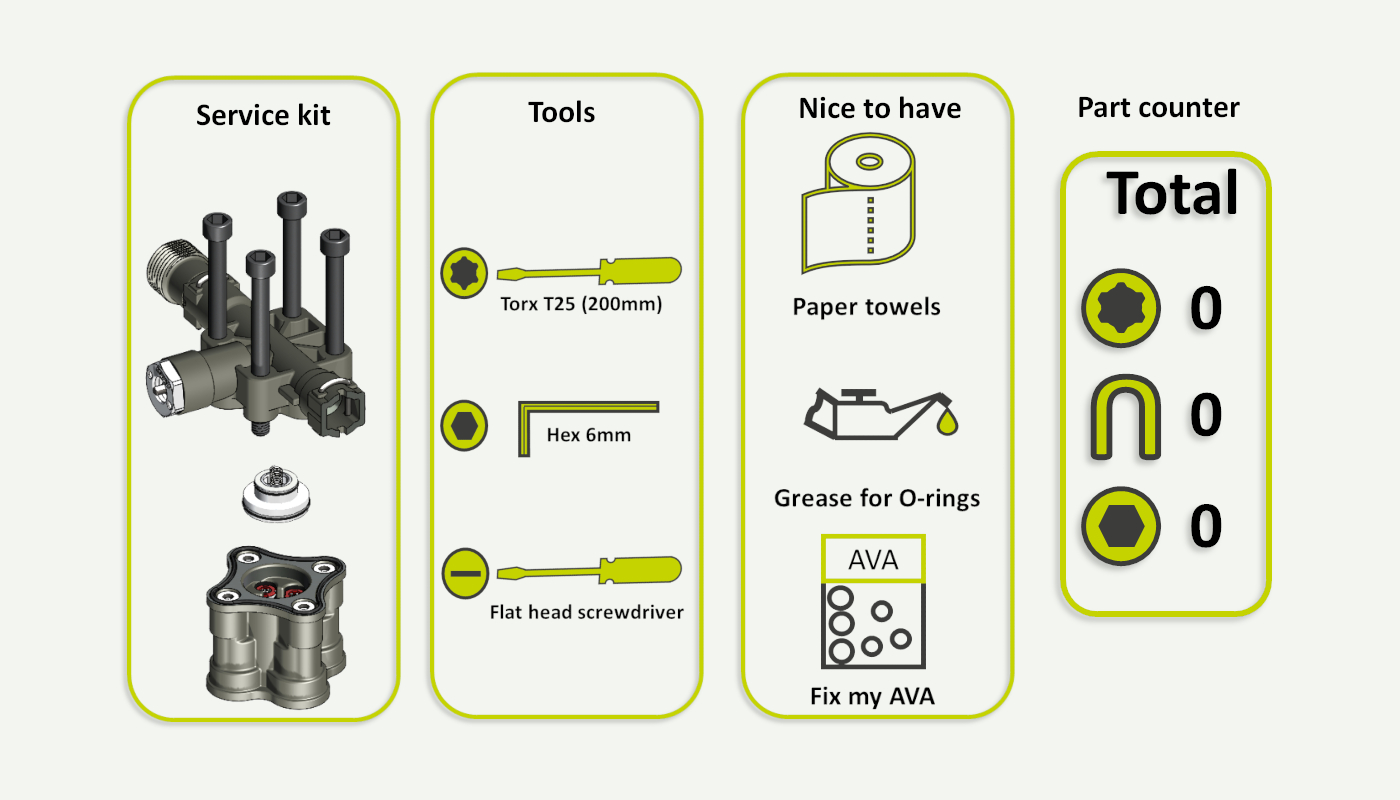
01. Remove water filter
Remove water filter by unscrewing it counterclockwise.
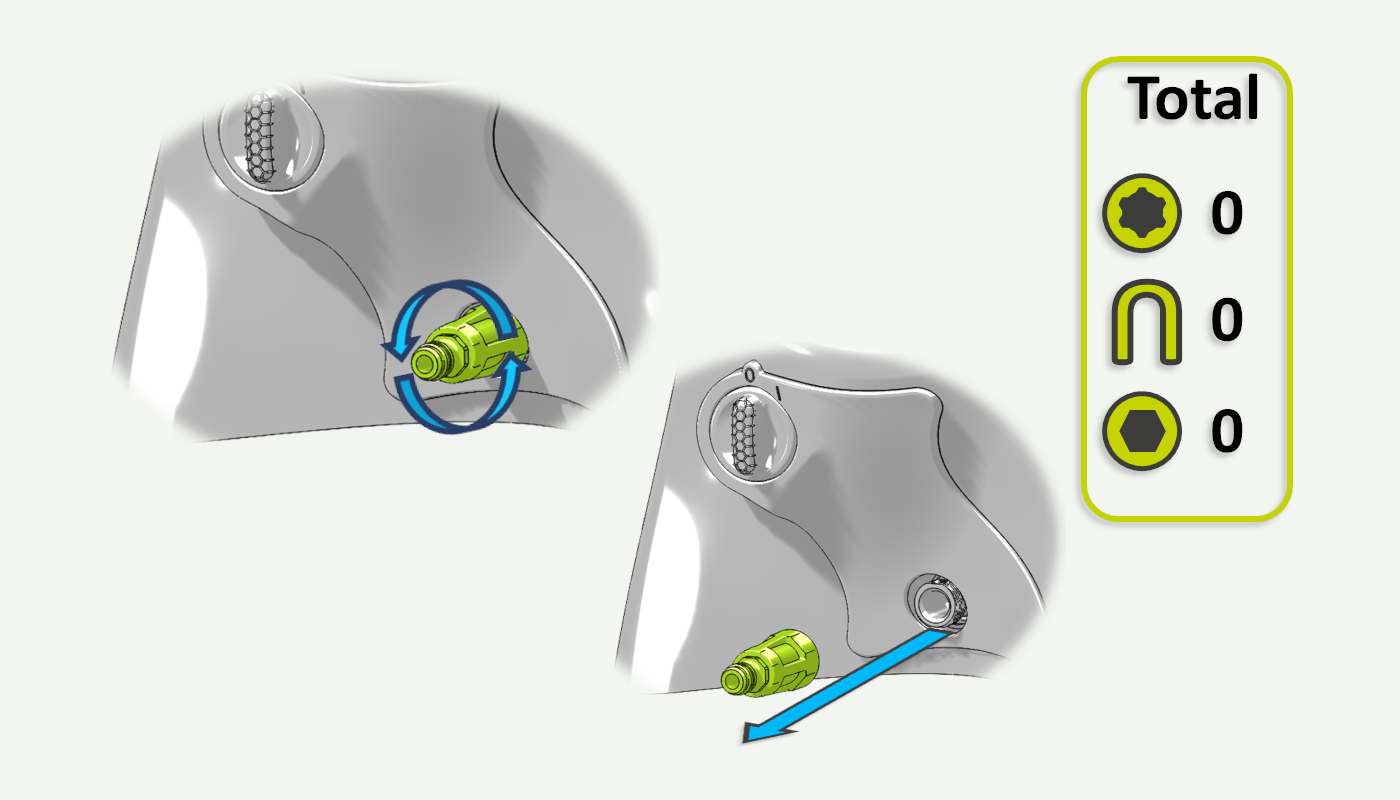
02. Remove the hose reel
Release the short pressure hose from the pump outlet. Unscrew the 3 T25 screws from the back cabinet. Take off the cover and the hose reel.
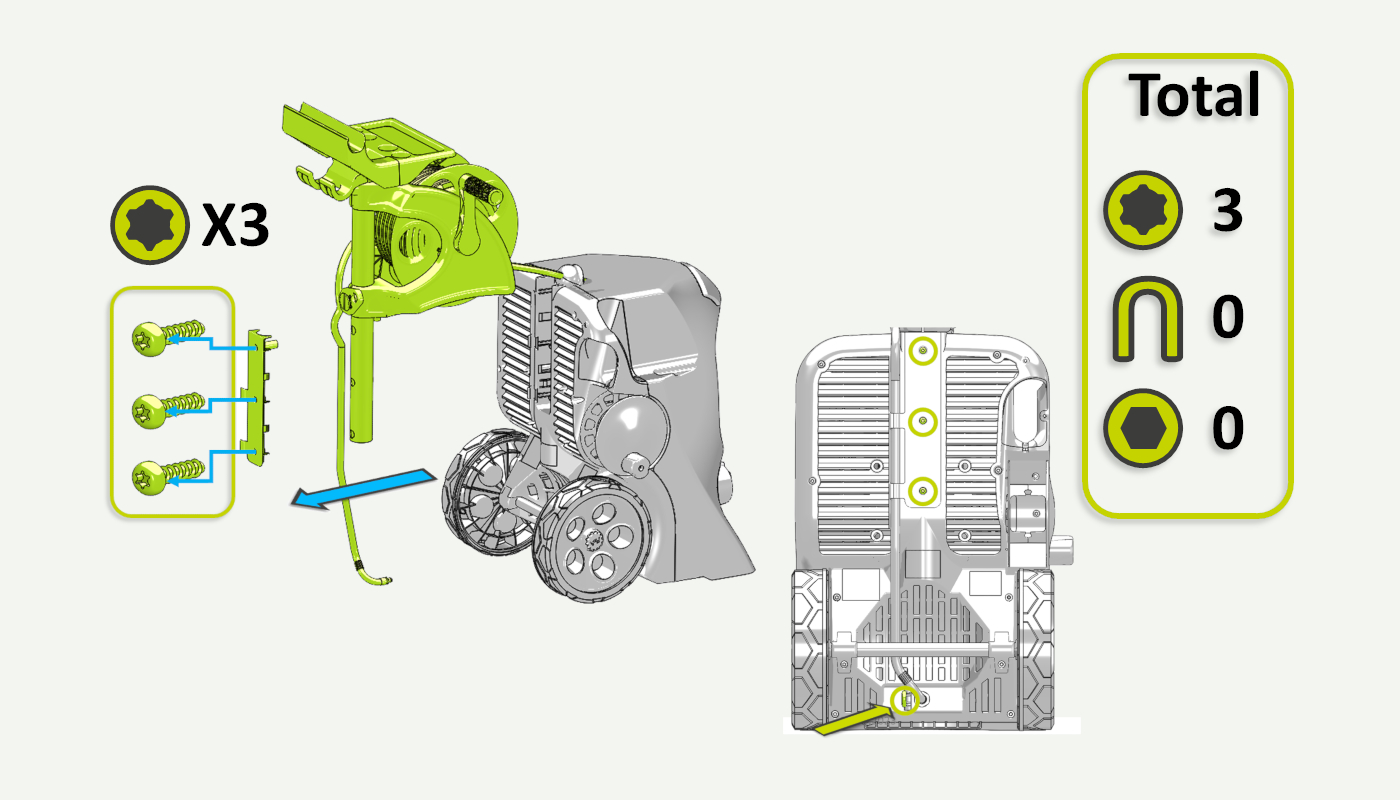
03. Remove screws from the back cabinet
Remove the power cable from the cable reel so you can access the two screws behind the reel. Unscrew the 11 T25 screws from the backside of the pressure washer.
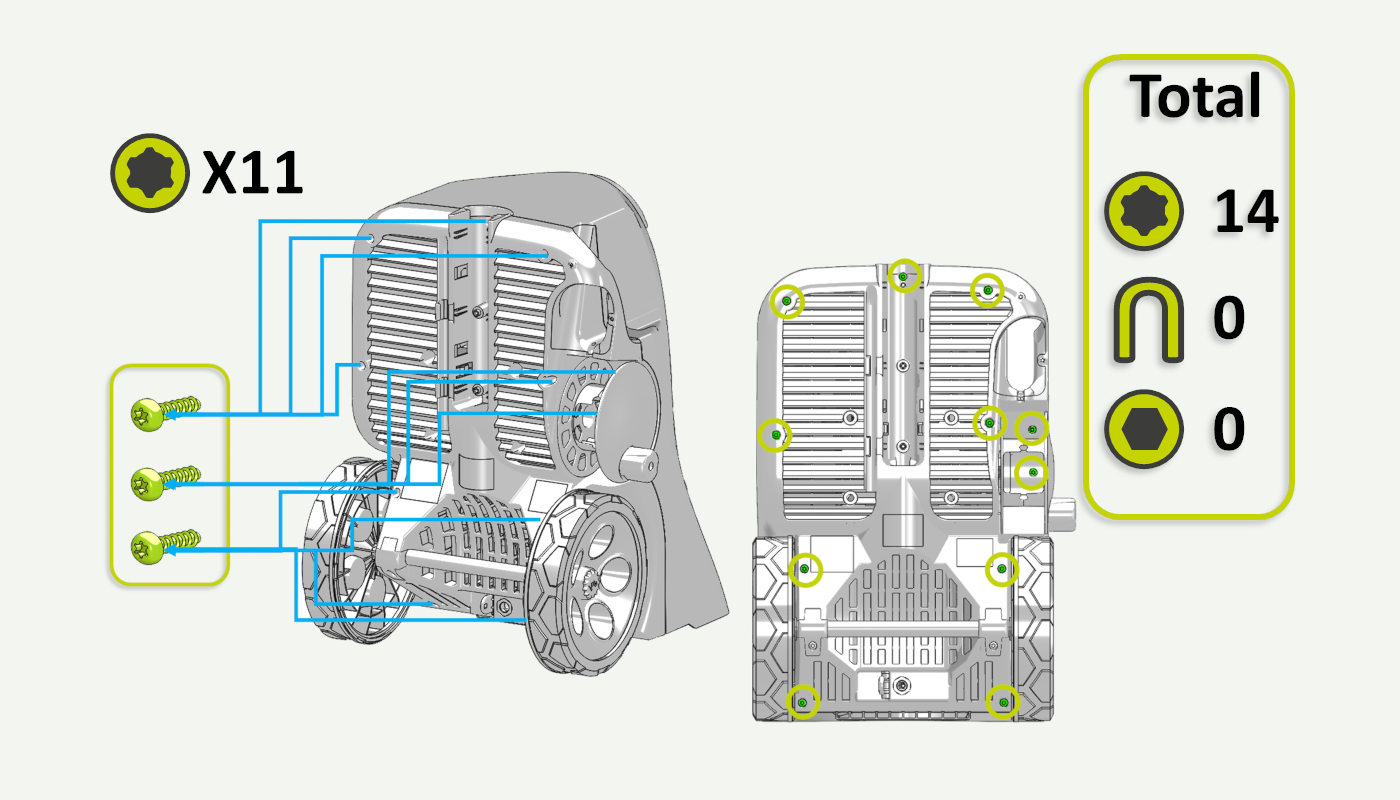
04. Lift off the rear cabinet
Put the pressure washer face down. Lift off the rear cabinet. Release the strain reliever and the power cord.
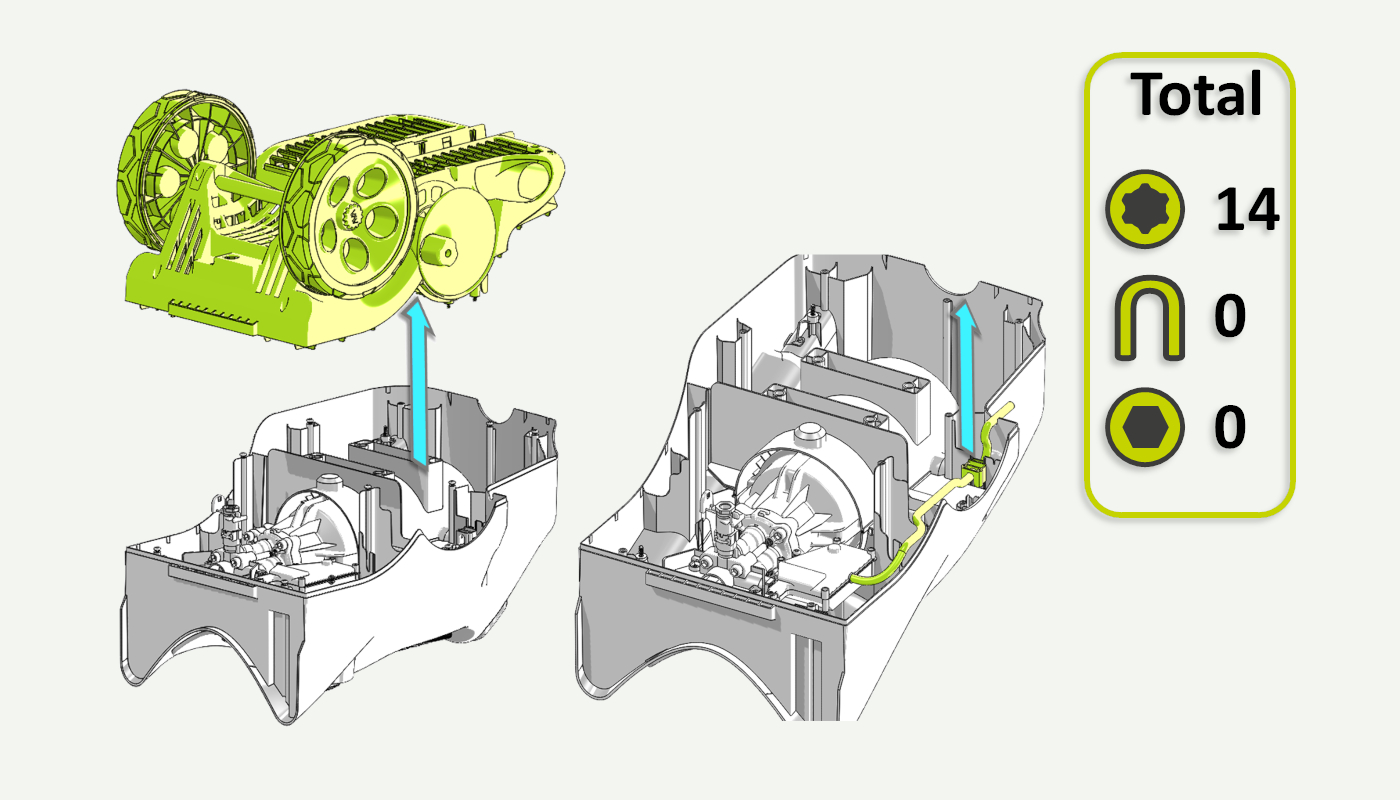
05. Remove screws from the pump.
Unscrew the 3 T25 screws securing the motor/pump.
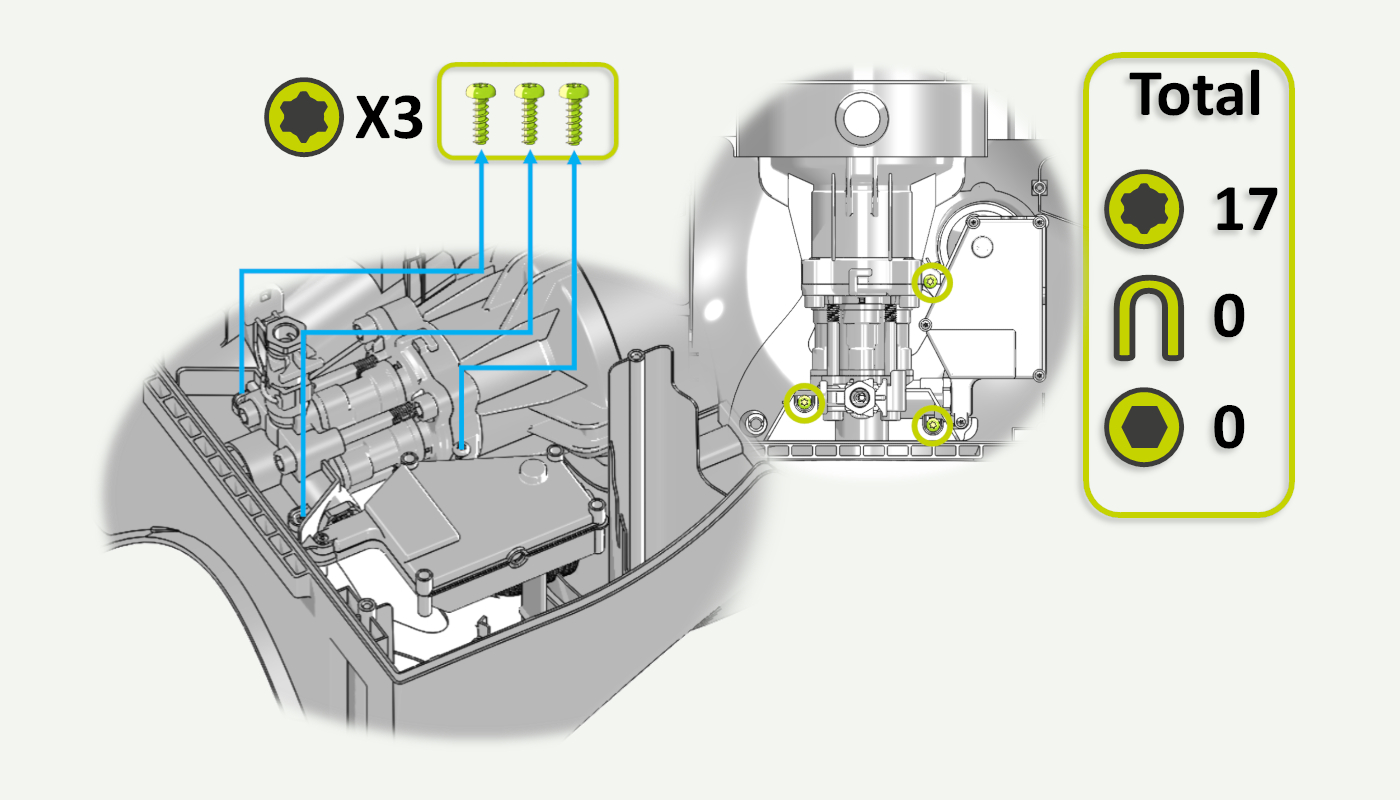
06. Remove the water outlet
Use a flat head screwdriver to pry loose the U-pin at the pump head. Remove the U-pin and then remove the high-pressure water outlet.
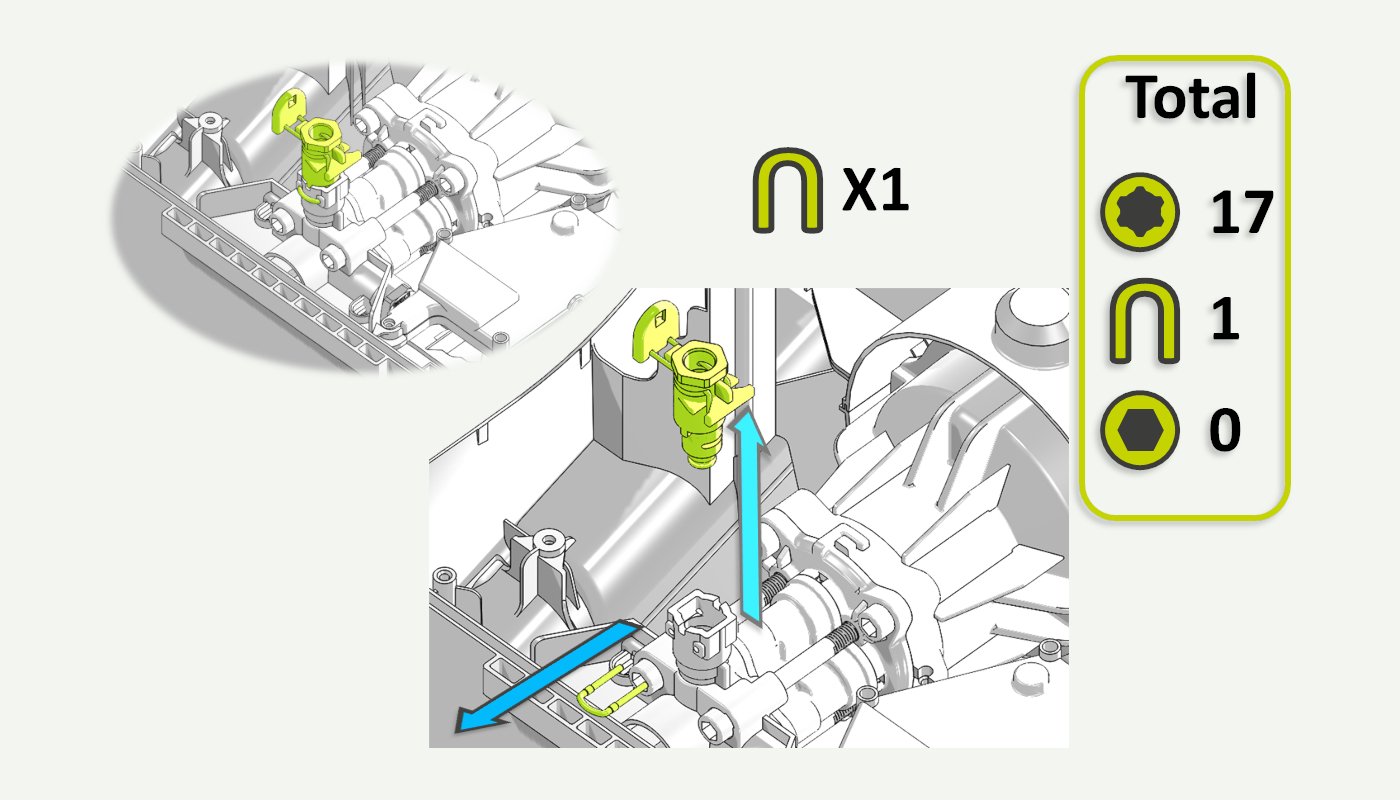
07. Remove the motor/pump
Carefully lift the motor/pump out of the front cover. Turn it 180° before placing it on a flat surface. Remove the on/off button, its extension and the pump head cover.
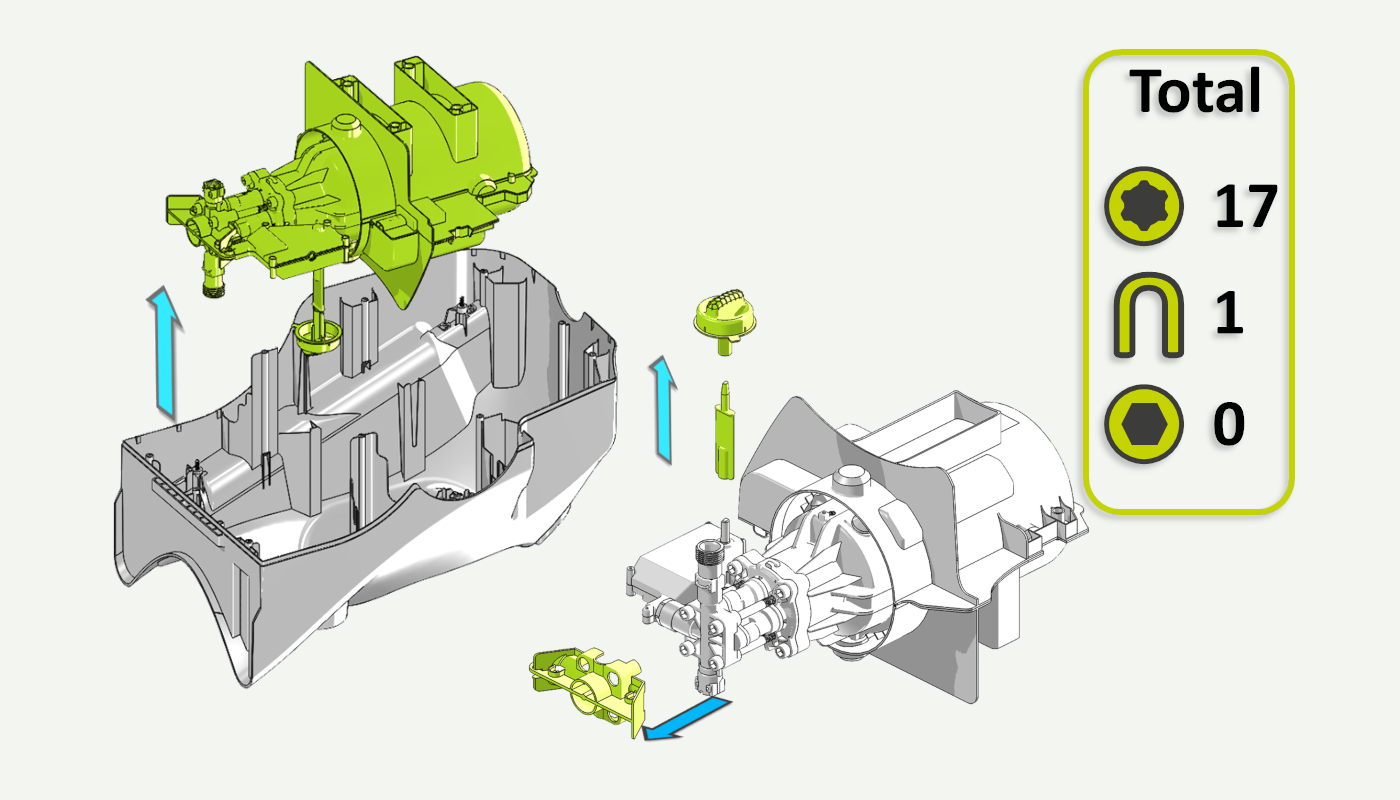
08. Remove the switch box
Remove the switch box by pulling it in the direction indicated. It is press fitted onto the start/stop valve on the pump.
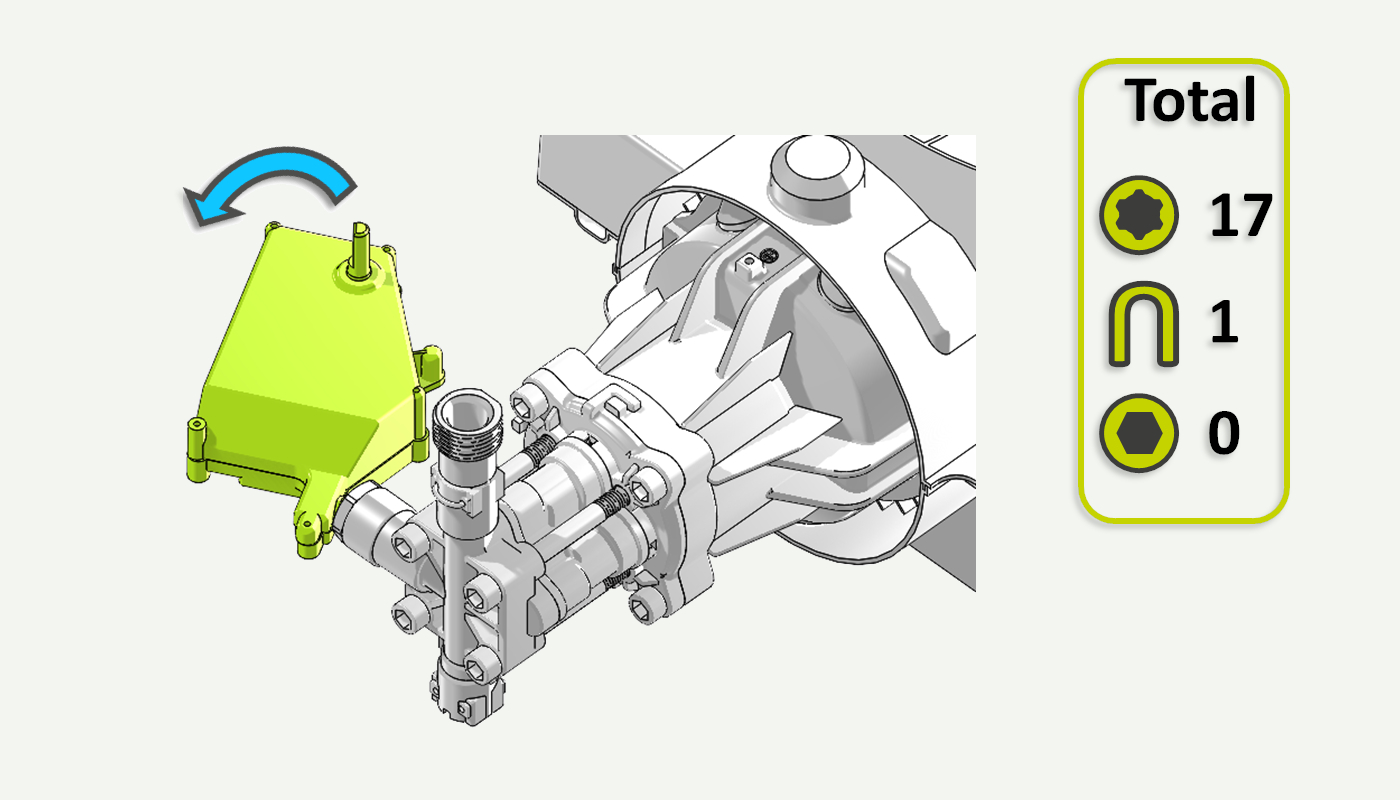
09. Loosen the screws securing the pump
Use a 6 mm hex/Allen key to loosen the 4 screws securing the pump assembly.
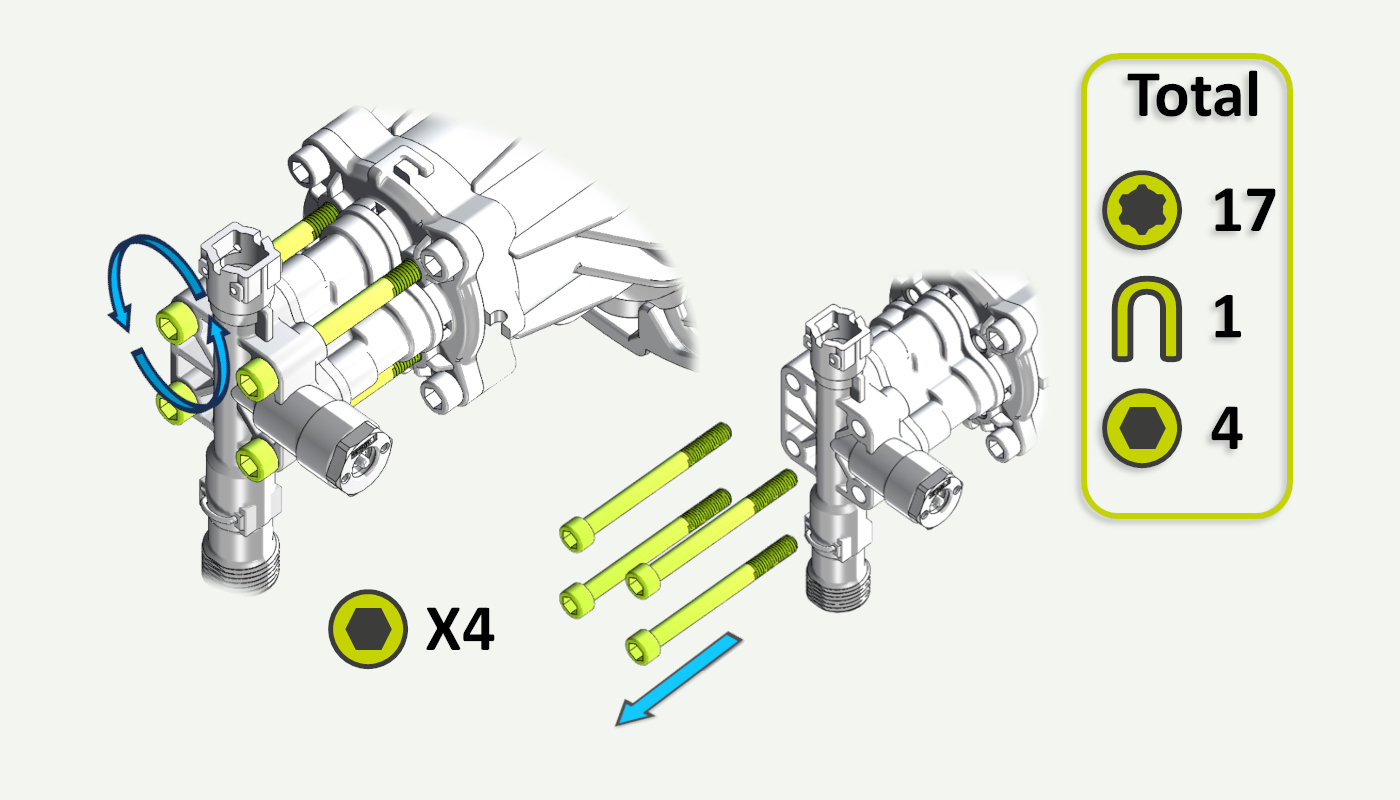
10. Remove the pump assembly
Remove the pump from the piston housing. The plastic (blue) and brass (pink) backing rings are to be reused on the 5 year service kit.
Only the P80 model use the plastic backing rings.
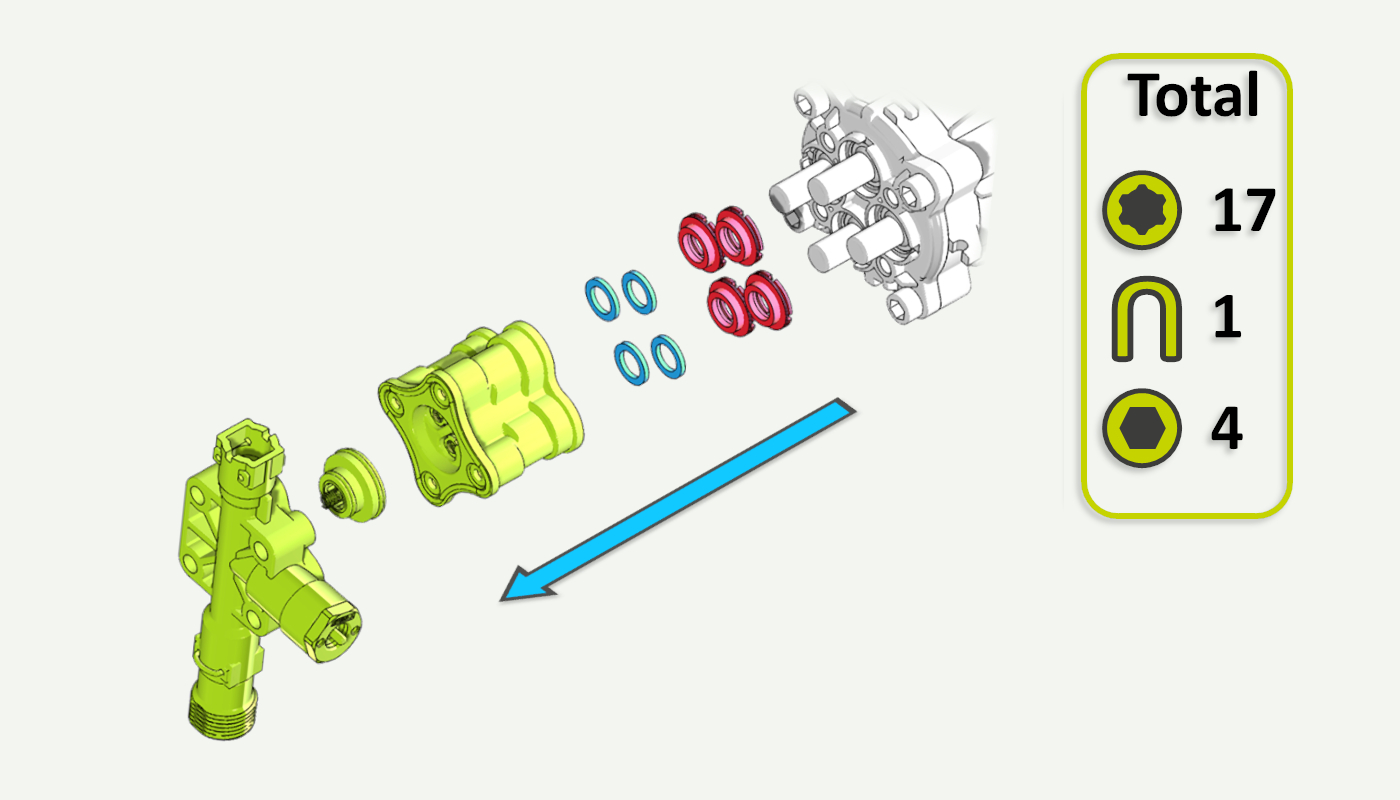
11. Prepare service kit
Lubricate O-rings as indicated and then assemble the pump as shown.
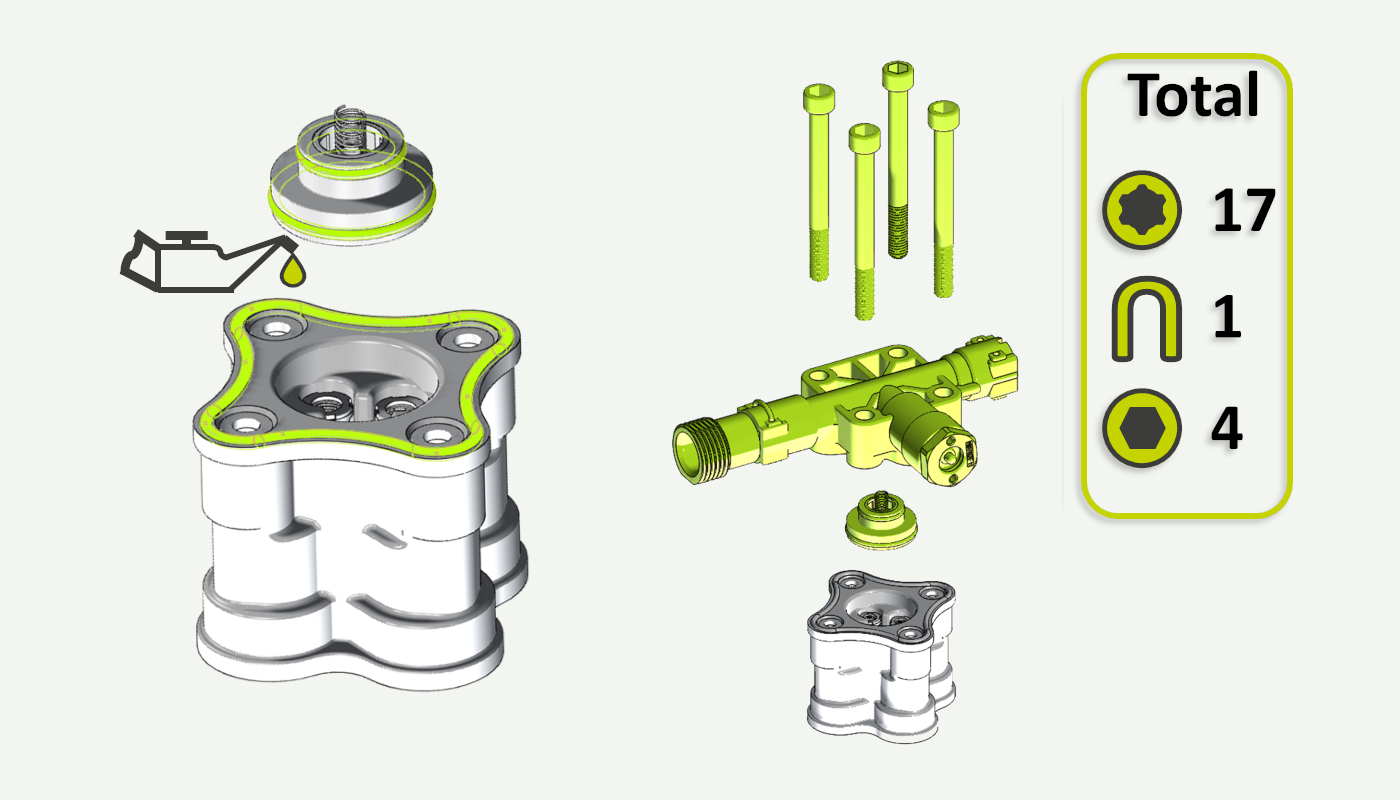
12. Mount the pump
Mount the pump to the piston housing. Pay attention to the order of the backing rings. P60 and P70 pumps do not use the plastic backing rings (blue).
The pump should be aligned so that the start/stop valve is at the same side as the hole for the switch box.
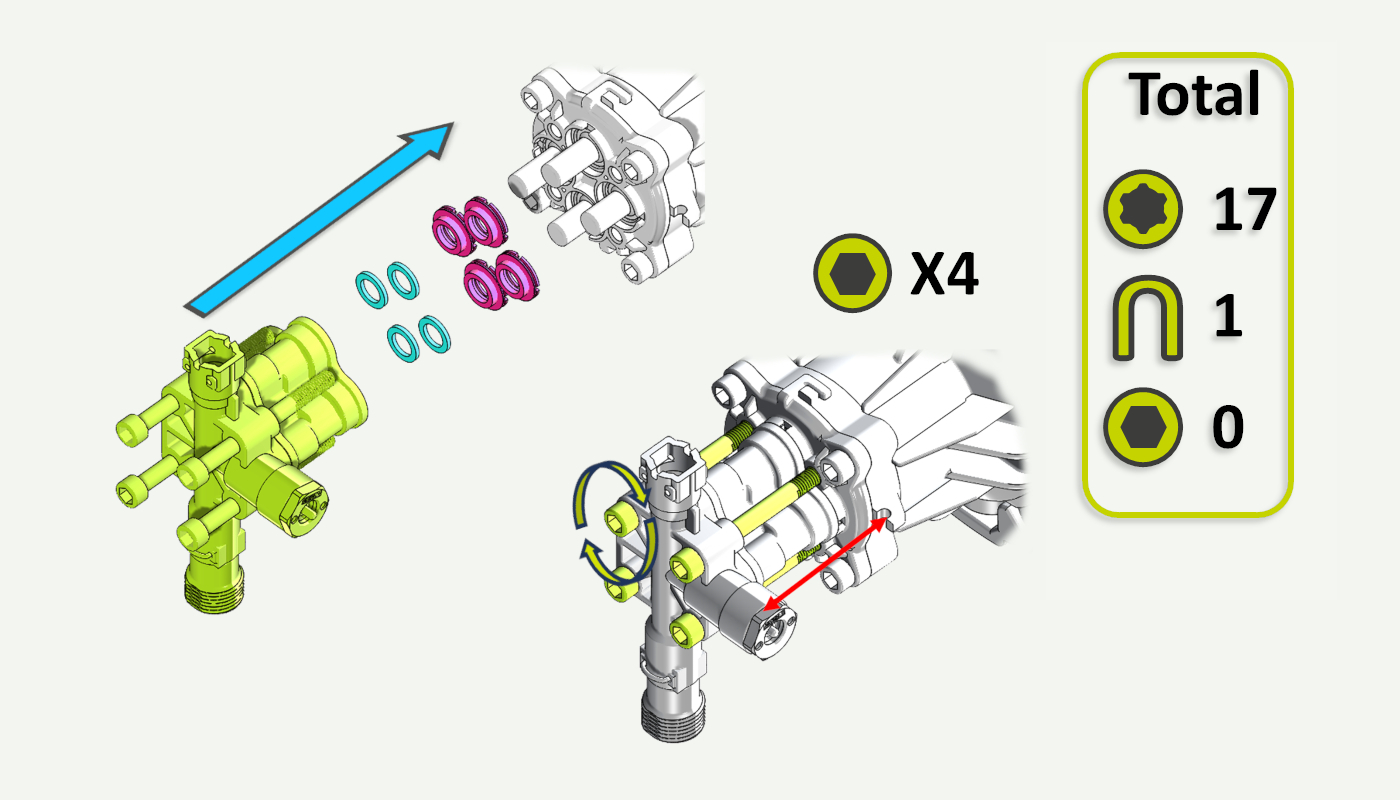
13. Reattach the switch box
Attach the switch box to the pump. You may need to put quite a lot of pressure to get the box firmly seated on the start/stop valve. It should pop into place.

14. Reattach the on/off button
Reattach the on/off button, its extension and the pump head cover.
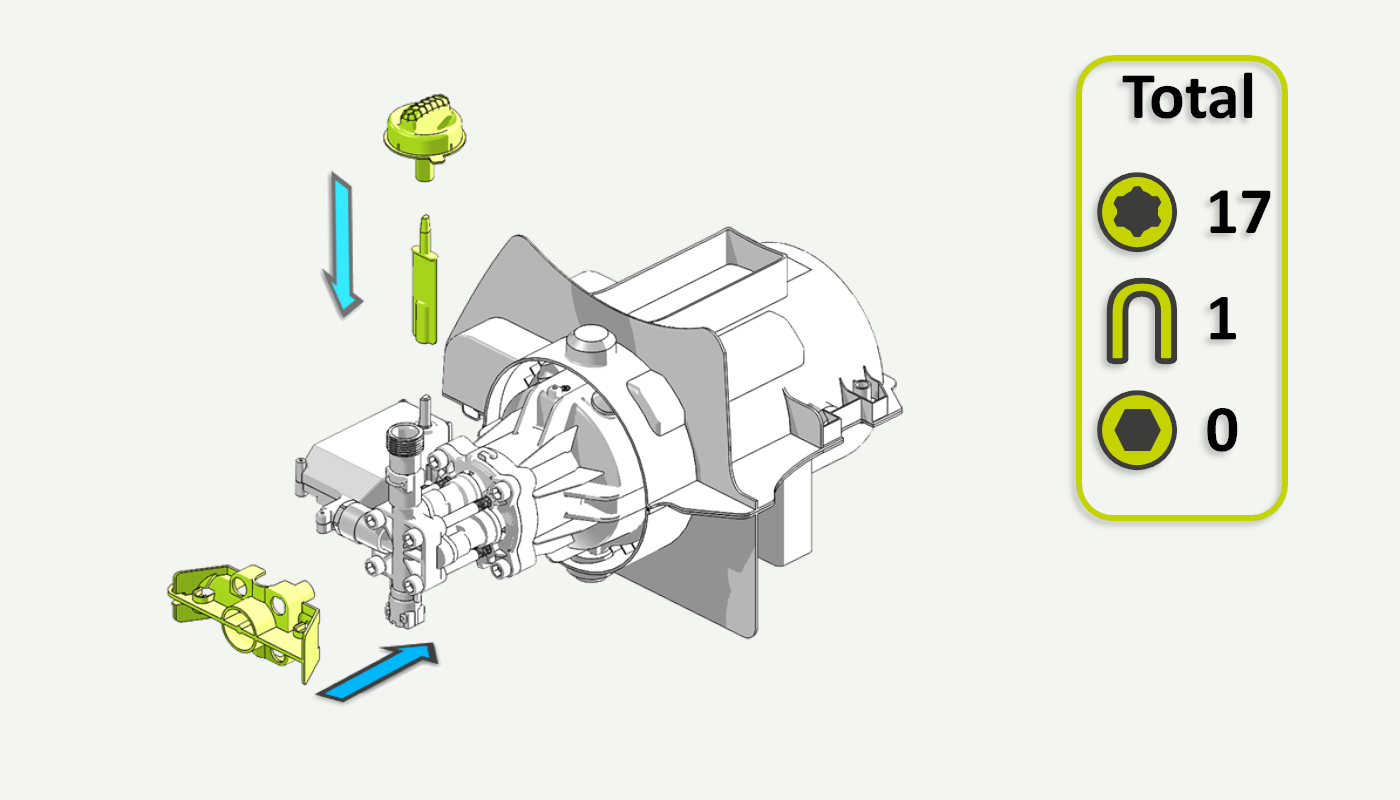
15. Place the motor/pump unit back into the front cover
Carefully lift the motor/pump and turn it 180° before placing it into the front cover.
Make sure the on/off button and its extension are properly positioned so that they can operate freely.
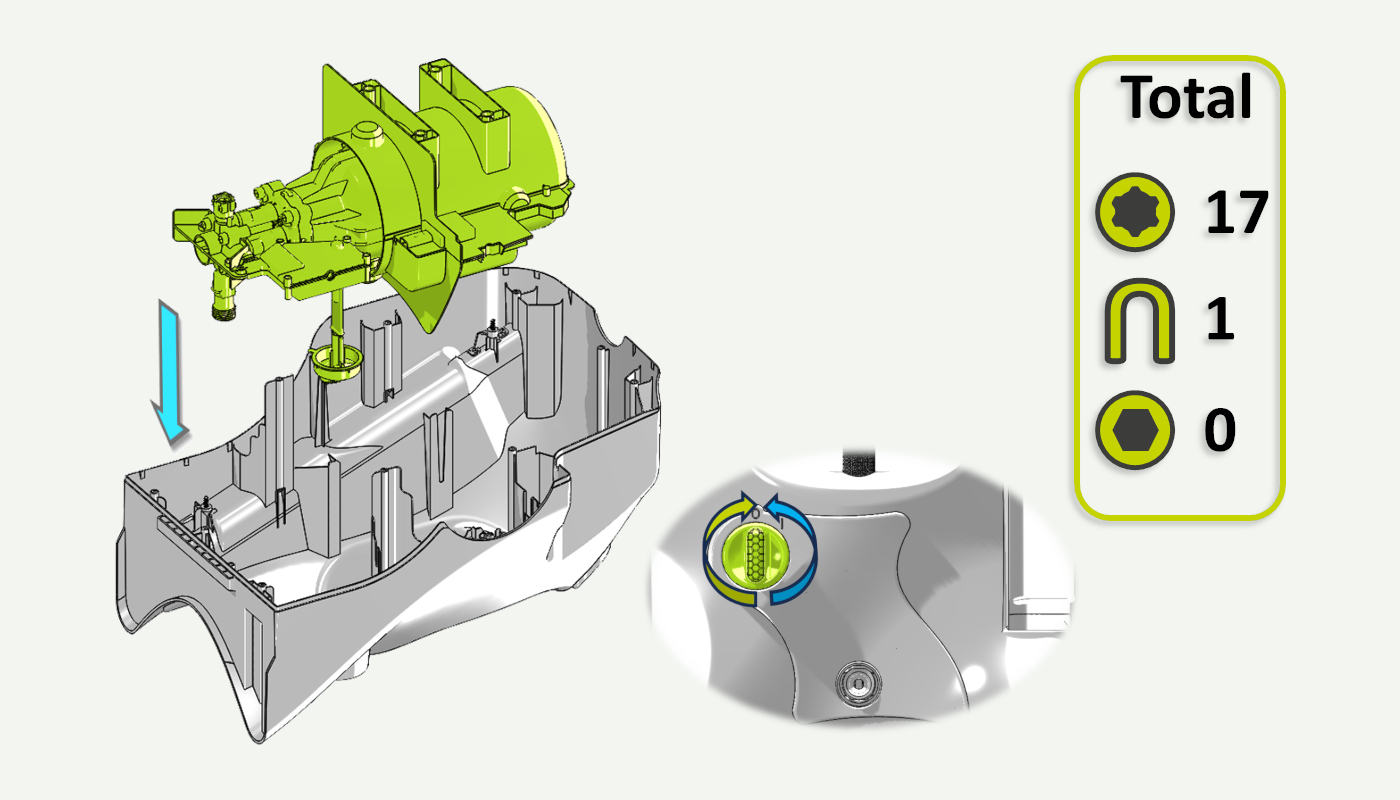
16. Attach the water outlet
Attach the high-pressure water outlet to the pump head. Secure it with the U-pin. Some force may be needed to fully fit the U-pin.

17. Secure motor/pump unit to the front cover
Secure the motor/pump and the switch box using the 3 T25 screws.
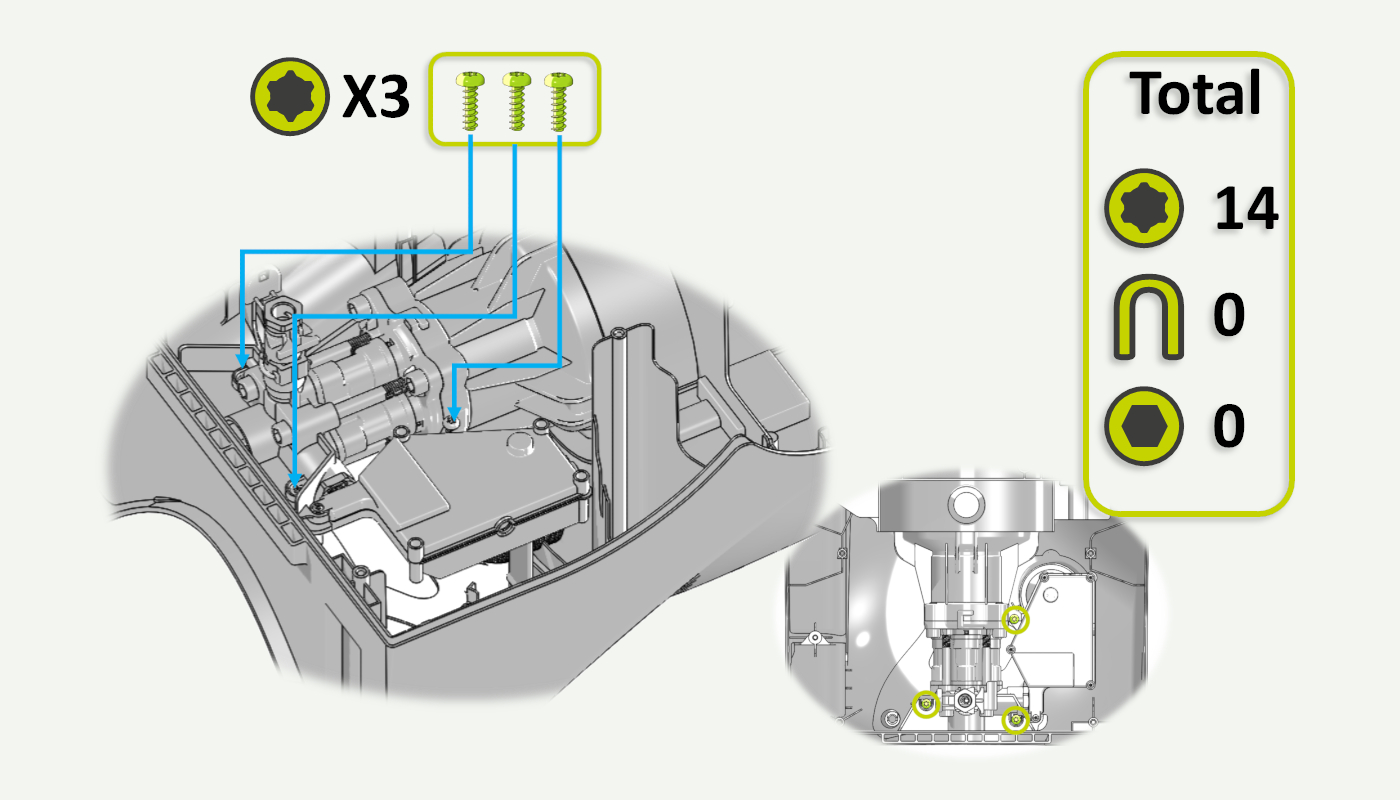
18. Fit the back cabinet
Fit the strain reliever and make sure the power cord is correctly situated.
Place the back cabinet onto the front cover. Adjust so both parts align correctly. If you are having trouble to get a good fit, check that the power cables and motor cowling are aligned correctly.

19. Secure the back cabinet
Once you are happy with the alignment of the back cabinet, secure the front cover to the back cabinet with 11 T25 screws.

20. Fit the hose reel assembly
Fit the hose reel assembly to the back cabinet.
Push the interconnect pressure hose into the depression.
Fit the cover and secure it with 3 T25 screws.
Connect the hose to the outlet.

21. Reattach the water filter
Check that the filter cassette is clean and without damage.
Reattach the water filter to the water inlet.
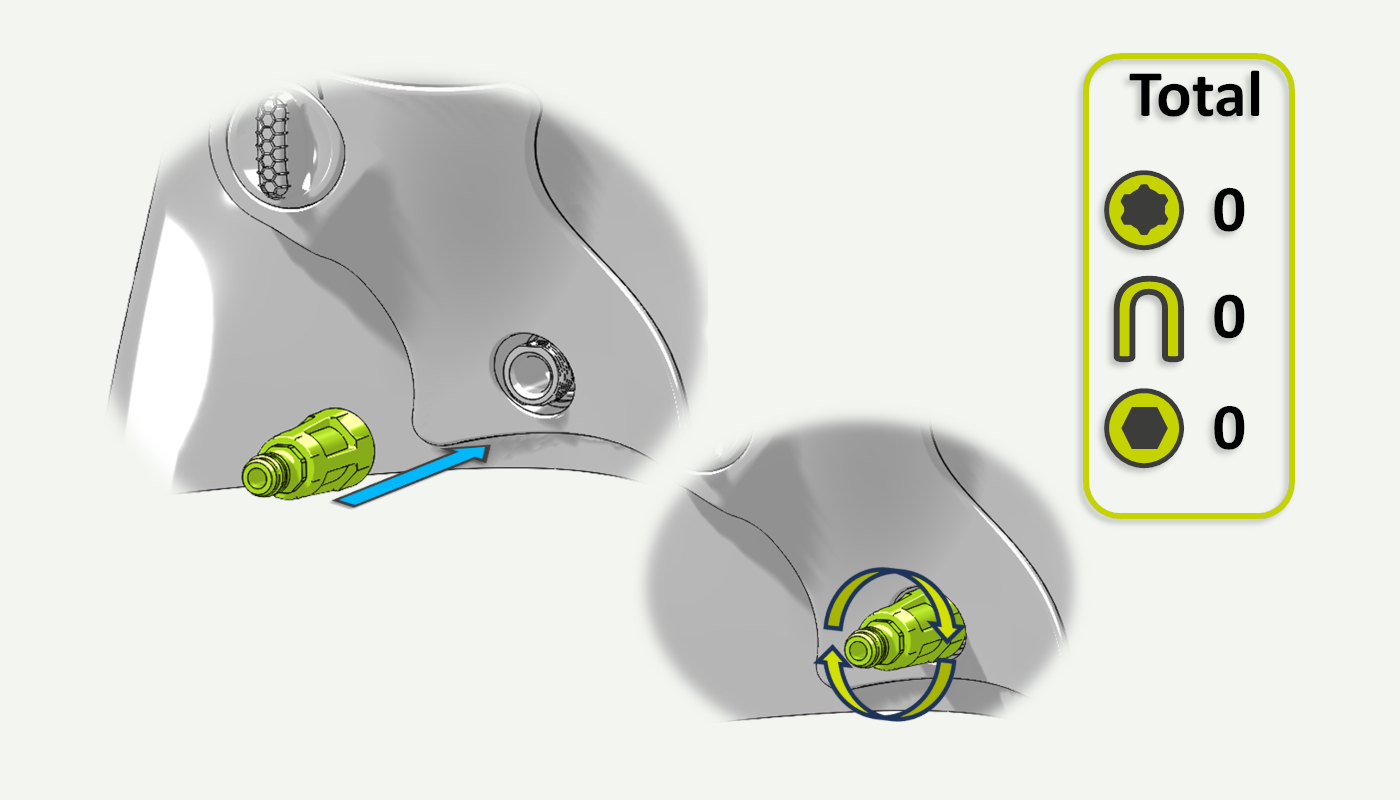
22. First start after service
Congratulations on finishing the service of your AVA product.
It is now time to do the first start after service.
- Start by connecting the pressure gun to the hose.
- Connect water. Make sure no water is leaking from the inside or anywhere else on the pressure washer.
- Pull the trigger and let the water flow until there's no more air coming out.
- Connect the power cord.
- Turn on the pressure washer.
- Pull the trigger and let the water run for a minute before connecting a nozzle.
- Connect the nozzle.
- Use the pressure washer and make sure it is operating as normal.
23. Troubleshooting
Water is leaking from the inside
- Disconnect the power and open the pressure washer to locate the leak.
- Take necessary action to remedy any leaks.
The motor runs and won't stop when you release the trigger
- This is most likely due to improper seating of the switch box on the start/stop valve.
- Open the machine and check that the switch box is correctly seated.
The pressure washer won't turn on
- Check that the power cable is connected.
- Check that the circuit breaker has not been tripped.
- Check that the fuse in the power plug is intact (UK models only).
- Open the machine and check that all the internal cabling is connected.
Poor performance/pressure
- Improper assembly or dirt/debris in the pump.
- Check that the pump and especially the main valve for foreign objects/debris.
- Make sure that the spring in the main valve is correctly seated and working as intended.
The motor is making a humming noise and is not able to start
- Check that the capacitor is connected to the motor.
- It should be connected with one white and one black cable.